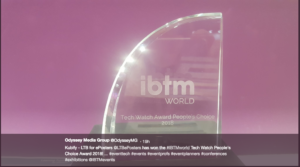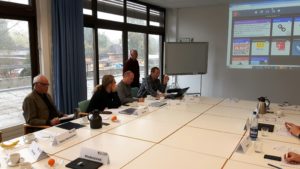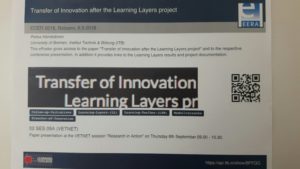Trainers’ views on introducing digital tools to vocational learning – Part Three: Insights into special areas of learning
With my previous post I started a series to report on interviews with vocational teachers, trainers and supporting researchers or consultants for the TACCLE4-CPD project. The project seeks to develop continuing professional development (CPD) of teachers and trainers – with focus on enhancing digital competences. As I have mentioned, my work concentrates on the field of vocational education and training (VET). In my two previous posts I have summarised some of the pedagogic points raised by the trainers and their general views on the use of Learning Toolbox (LTB) as support for apprentice training. With this third post I want to draw attention to the role of LTB as support for two special areas of learning. Here I am reporting directly from an interview with an expert partner in health and safety and in supporting language learning on foreign apprentices. Here it is worthwhile to note that in both areas the use of LTB was started at the end of Learning Layers (LL) project and the trainers of Bau-ABC have been developing their own solutions.
Using Learning Toolbox (LTB) to support training in health and safety
Concerning the area of health and safety, trainers from different trades worked as an informal working group. This effort supported the creation of a coherent LTB stack and helped the trainers to prepare their domain-specific instructions in a coherent way. Now, that the trainers and apprentices in all trades are using LTB, it makes the health and safety material present in a new way – it is no longer info sheets in a folder. The LTB can be accessed by trainers and by apprentices at any time. This has helped to make the training in health and safety more creative and situation-adjusted – as lived practice.
Using Learning Toolbox (LTB) to support foreign apprentices’ language learning
The LTB-stack to support Spanish apprentices in learning occupational vocabulary has been created together with trainers and an external language teacher. It has been enriched with quiz tasks that have made the learning more exciting. Also, this stack has included health and safety terminology. The stack has been helpful in preparing the apprentices for their tests and it will be developed and updated regularly. The usability has been greatly enhanced by the fact that Spanish is provided by LTB as an optional language.
—
I think this is enough of these examples. Altogether these interviews have given me a good feeling that the main result of our joint LL project – the Learning Toolbox – has been used actively. Moreover, it has become clear that the LTB has not been whatever digital tool among others. Instead, in the context of vocational learning it has proven to be a strategic toolset to promote digital competences and to enhance vocational learning. But we need to work further with these themes.
More blogs to come …




















